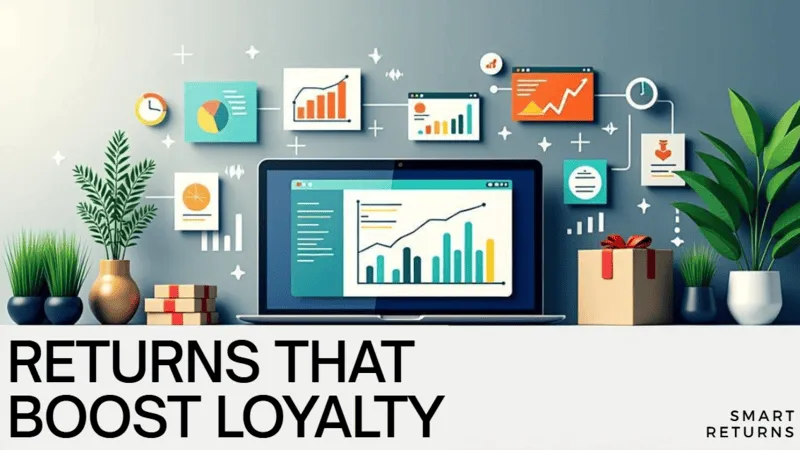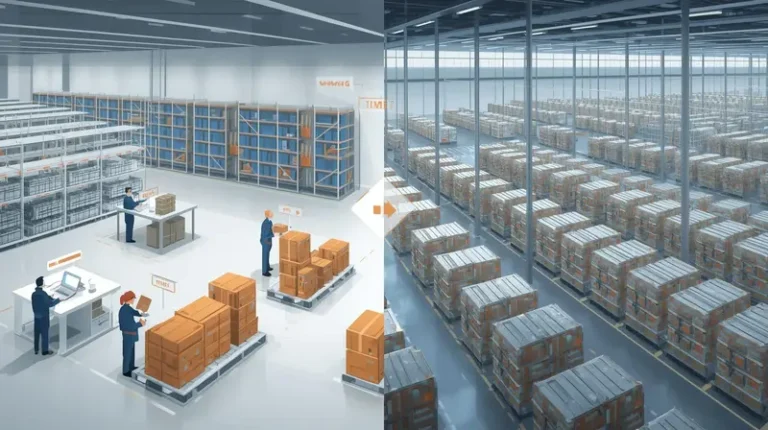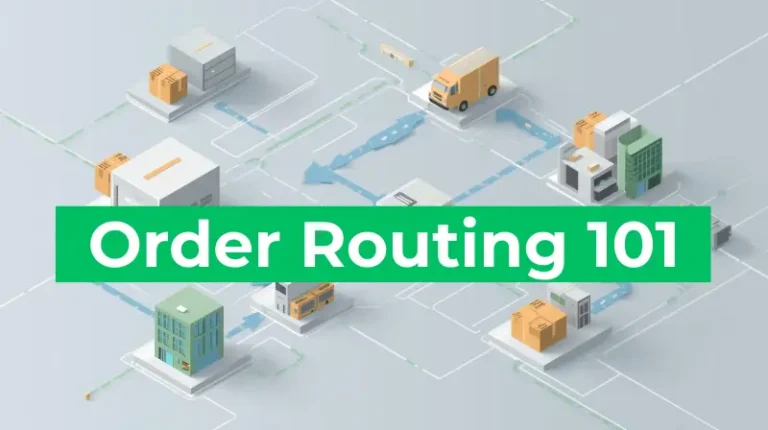How To Evaluate Return Platforms: Beyond Pretty Portals And Generic Insights

Last updated on August 20, 2025

If your returns platform is only a nice portal, you are paying for decoration. Returns software should lower reverse logistics costs, raise customer lifetime value, and protect margin. Otherwise, it is a rounding error with a great landing page.
The Stakes: Returns Are A P&L Problem, Not A UX Project
Retail returns hit an estimated $890 billion in 2024, roughly seventeen percent of sales. That is a tidal wave of shipping costs, restocking, and fraud that makes or breaks profitability for many ecommerce businesses. No wonder most retailers say upgrading returns capabilities is a near-term priority.
Meanwhile, carriers and networks are piling in. UPS’s Happy Returns touts faster restocking and fewer support contacts via box-free, label-free returns. FedEx launched Easy Returns with thousands of drop-off locations to compete head-to-head. Narvar is aggregating pickup and drop-off networks across Walgreens, Kohl’s, UPS, and others. Translation: the last mile of returns is consolidating, and your software choice decides whether you can tap those cost curves.
Make Returns Profitable, Yes!
Cut shipping and processing costs by 70% with our patented peer-to-peer returns solution. 4x faster than traditional returns.
See How It WorksHow I Vet Return Platforms In 2025
I run the same playbook whether I am looking at Loop, AfterShip, Narvar, or anyone else. Keywords matter for SEO, but decision-making comes down to money saved per return and revenue kept.
1. Measure Net Revenue Saved, Not Portals Shipped
Ask for a cohort view that shows return rate, exchange rate, store credit adoption, instant exchanges, and bonus credit uplift by product category. If a vendor cannot show the delta versus your current baseline, the “actionable insights” claim is hand-waving. Returns management software must raise exchange and store credit conversion, or it’s not boosting customer lifetime value.
2. Verify Real Reverse Logistics Levers
Pretty return portals are table stakes. What you want is operational leverage. Consolidated drop-off networks to reduce labels and touches, in-app tracking that accelerates refunds without adding support tickets, and automation rules that release refunds only on delivered scans. AfterShip emphasizes automated status updates tied to tracking events. Narvar and Happy Returns emphasize consolidated returns and faster restock. Map these features to your shipping costs and warehouse handling steps.
3. Treat Fraud Like A First Class Citizen
Return fraud is not an edge case. Retailers report significant exploitation. You need eligibility rules, blacklists, serial returner controls, and SKU-level policies baked into the platform, not handled ad hoc by customer support. If “fraud prevention” is a slide but not a permission set, keep looking.
4. Ask For Exchange Intelligence, Not Just “Instant Exchanges”
Instant exchanges are useful, but the real trick is routing exchanges to in-stock substitutes and surfacing cross-sell recommendations that recover revenue. Demand evidence that exchanges meaningfully reduce refunds on your top return reasons. Loop, for example, positions connected returns, exchanges, and fraud in one workflow. Install the demo on low-volume traffic for two weeks and compare the exchange-to-refund mix.
5. Force An Ops Dry Run With Your 3PL
Your 3PL or fulfillment centers must actually receive, triage, and restock returns that the portal generates. Wire up the return label, RMA codes, and status webhooks with your warehouse management system so returns hit the right dock door and bin locations. AfterShip documents webhooks that create returns in a WMS automatically. Do not go live until your warehouse confirms SLAs for inspection, grading, and restock.
6. Model International Returns And Landed Cost
International returns amplify shipping costs and duties. Your returns software should auto-calculate options that minimize waste. For example, local consolidation, returnless refunds on low-value items, or dynamic rules that steer sendbacks to regional partners. If the demo has no answer for international returns, your “global brand” plan is domestic only.
7. Benchmark Time To Refund And Support Noise
What is the median time from return initiation to refund, and what percent of shoppers hit customer support for status? Happy Returns claims faster restocking and fewer contacts with pre-verified, consolidated flows. Ask every vendor to show your projected time to refund and expected contact reduction with their network, not generic case studies.
8. Check Price Transparency And Volume Tiers
Returns platform pricing often looks cheap up front, then adds per-return overages. AfterShip’s public pricing shows monthly tiers and per return fees beyond the cap. Make sure you consider seasonality, peak returns after major sales events, and any carrier kickbacks that are not passed through.
Convert Returns Into New Sales and Profits
Our peer-to-peer returns system instantly resells returned items—no warehouse processing, and get paid before you refund.
I'm Interested in Peer-to-Peer ReturnsWhere The Big Names Fit Right Now
- AfterShip Returns. Strong on branded return portal, tracking native to the suite, automation rules, and sane APIs. Better if you want one vendor across post-purchase and tracking.
- Narvar. Big on concierge drop-off networks and policy enforcement at the edge. Good for retailers who benefit from wide physical networks.
- Happy Returns by UPS. Best when you want box-free, label-free consolidation that speeds grading and restocking. Momentum with UPS footprint.
- Loop. Oriented to DTC brands that want exchanges to dominate refunds and fraud tools tied to returns flow. Validate claims against your data.
- Cahoot Returns. Peer-to-peer returns to the nearest partner node, lower miles, first-scan refunds, faster resale, exchange-first rules, more eco-friendly, happier customers.
My Shortlist Criteria
If I were buying returns management software tomorrow, I would require: 1) the exchange rate is up at least twenty percent within sixty days, 2) refund issuance automated on carrier scan, with exceptions for high-risk SKUs, 3) drop off consolidation available in my top twenty return ZIP clusters, 4) fraud flags and serial returner policies I can tune without engineering, and 5) clean integrations with my OMS, WMS, and carriers so the entire returns process is observable. Otherwise, I keep my money.
The Cahoot Angle
We designed our returns management software around peer-to-peer returns, not warehouse boomerangs. When a shopper starts an ecommerce returns flow, AI grading and photo verification inside the return portal assess the condition, then auto-lists the item as Like-New with a smart discount, and we prompt the returning shoppers toward instant exchanges, store credit, or bonus credit that protects customer lifetime value. The magic is the shipping: once a new buyer checks out, the original customer ships directly to the next customer, so the entire returns process moves forward instead of backward. That shift slashes reverse logistics miles and shipping costs, speeds resale, boosts customer loyalty, and turns retail returns into more revenue rather than sunk costs. You still get actionable insights, real-time order tracking, and clean integrations with your OMS, WMS, and carriers, so you can manage returns, refine your returns policy, and save time and money without adding warehouse handling. Use Cahoot as a comprehensive solution or connect it alongside returns platforms like Loop, AfterShip, and Narvar to deliver easy returns and a better post-purchase experience at a lower cost.
Frequently Asked Questions
How Do Return Platforms Reduce Shipping Costs Without Angering Shoppers?
Consolidating box-free drop-offs, refunding on “first scan” rather than on arrival, and steering instant exchanges to in-stock alternatives all lower reverse logistics costs while preserving a happy returns feel. Vendors like Happy Returns and Narvar build the physical networks that make this viable.
Does Charging For Returns Kill Customer Loyalty?
The industry is shifting away from blanket free returns, but the winners keep loyalty by offering exchanges, bonus credit, and convenient drop-offs. Shoppers still rank returns as a key factor in purchasing decisions, so communicate clearly and offer fair options.
What Metrics Should I Track In Returns Management Software?
Exchange rate, store credit rate, refund share, time to refund, cost per return, and touchpoints per return. If the platform cannot expose these, you cannot manage returns as a profit lever.
Which Platform Is Best For International Returns?
Look for dynamic rules that enable local consolidation and returnless refunds for low-value goods, plus integrations to your international carriers. Most vendors can support this, but proof comes from your lanes and your tariffs.
How Do I Connect A Return Portal To My Warehouse?
Platforms like Cahoot and others offer hosted apps and APIs so that returns management can be done inside the respective UI’s, or from within your warehouse management system. Test the full operations workflow before peak season.

Turn Returns Into New Revenue


 7 minutes
7 minutes


